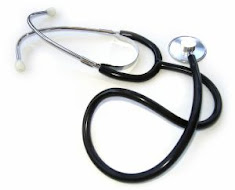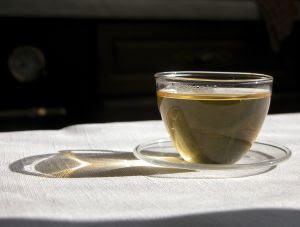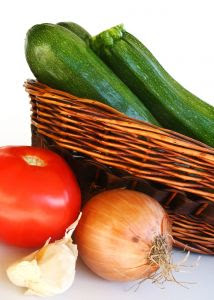 Feeling depressed?
Feeling depressed?With the economy stuck in neutral, people have more reasons to be depressed—and less money to treat their depression—than in the past.
The cost of medication and talk therapy add up even if you have health insurance—and more than 46 million people in the U.S. (and counting) do not.
If you’re depressed, and especially if you have bipolar disorder, lifestyle changes and other do-it-yourself strategies are not a substitute for professional help. But even if you are already taking antidepressants or seeing a therapist, there are many things you can do to help yourself feel better—and they don’t cost a dime.
Don't blame yourselfThis is the simplest, cheapest, and most important thing you can do to beat depression. The stigma of depression, plus feelings of guilt and inadequacy, can get in the way of recovery. Managing the symptoms of depression requires a practical, proactive approach—and patience.
“You need to be able to own the reality that depression is a physical illness like heart disease, diabetes, and cancer,” says Richard Raskin, PhD, a clinical psychologist in New York City and Litchfield, Conn. “You can’t get over it by ‘trying harder’ or adjusting your attitude. It requires acceptance that you have a physical illness that requires attention, and that it makes no sense to blame yourself for it.”
Talk about itIt’s not easy, but telling people about your depression is better than keeping it a secret.
“Not everybody is going to understand and be supportive,” says Raskin. “If you have a broken arm, or back pain, or a headache, everybody can relate to those, for everyone has experienced them. Not so with mental illness.”
But even if they don’t entirely understand what you’re going through, friends, family, and other confidants can provide emotional support, help you seek out treatment options, and serve as sounding boards. “Don’t let yourself become isolated,” says Raskin. “To the degree that you can reach out, reach out.”
Get regular exerciseIt may be the last thing you feel like doing when you’re depressed, but going for a run or hitting the gym can actually make you feel better.
When done regularly, 30 minutes or more of vigorous exercise has been shown to improve the symptoms of depression. In one study, patients who worked out regularly on a treadmill or stationary bike for 12 weeks saw the severity of their symptoms reduced by nearly 50%.
Exercise has short-term benefits too: Other research has found that workouts can boost your mood for up to 12 hours.
Postpone major decisionsDepression can affect your perceptions and judgment, so it’s wise to put off big decisions about your relationships or career until you’re feeling better.
“One of the symptoms of depression is having a negative outlook on many things going on in your life,” says Raskin. “This alters your judgment on almost everything, and you might not be aware of it. So to the extent possible, important decisions should be delayed.”
If you absolutely must make a decision, don’t be impulsive. Before making the decision, Raskin suggests, consult people close to you whom you trust, such as your therapist, family, friends, or a clergy member.
Take care of your healthIf you’re feeling depressed, it's tempting to let your health slide. But failing to take care of your overall health can make depression symptoms worse.
The relationship between depression and health conditions such as diabetes and heart disease is a chicken-and-egg phenomenon. Research suggests that depression can exacerbate these conditions, but the opposite also appears to be true. People who experience diabetes-related complications are more likely to be depressed, for instance, and there is also some evidence that the stresses of heart disease contribute to depression, especially following a heart attack.
Maintain a daily routineSticking to a regular routine as much as possible is important for people who are battling depression, according to Raskin.
“Whatever activities you decide to engage in, try to do them at the same time every day,” he says. “A routine—anything from jogging and shopping to doing the dishes—helps you avoid the stay-in-the-house-in-your-pajamas syndrome, which can make things worse; a routine demonstrates to you and to others that if you are capable of getting through the day, you are capable of recovery.”
Eat a healthy dietWhat you eat affects your brain, not just your body, so if you’re feeling depressed it’s important to eat a healthy, balanced diet rich in whole grains, fruits, vegetables, and protein.
No food is a silver bullet for fighting depression, but some foods may affect your mood more than others. For example, carbohydrates and foods that contain vitamin D boost levels of serotonin, a neurotransmitter associated with mood (and the same one targeted by drugs such as Prozac).
And some research suggests that omega-3 fatty acids, which are found in fish and fish-oil supplements, can help fight depression.
Avoid drugs and alcoholAlthough it can be tempting to drink or use drugs, don’t do it.
Substance use and abuse can wreak havoc in people with depression. People who suffer from depression and anxiety often turn to alcohol and drugs to relieve their symptoms, but that strategy tends to be harmful in the long run.
Drinking and drug use affect brain chemistry, and they can cause problems in relationships, work, and other aspects of life. (They can also be dangerous when combined with some antidepressants.) Although the occasional glass of wine probably won’t hurt you, people with depression should limit their alcohol consumption, and, of course, say no to drugs.
Try to sleep wellDepression and a lack of sleep often go hand-in-hand. Sleep problems such as insomnia are common in depression, and for many people a lack of sleep depresses mood.
This isn’t true for everybody, however; though the effect tends to be short-lived, sleep deprivation actually boosts mood in some people with depression. It can also trigger mania in people with bipolar disorder.
Much remains unknown about the connection between depression and sleep, and everyone has different sleep needs, but experts recommend that depressed people get enough sleep and maintain a regular sleep-wake schedule.
Don't overscheduleFeeling stressed and overwhelmed is a common trigger for depression symptoms. If you’re struggling with depression, it’s important not to overschedule your time and take on more than you can manage. If you have complicated tasks to perform at work or at home, break them up into manageable pieces.
And remember: It’s OK to slow down a bit. “Maybe you can’t work at 100% capacity,” Raskin says. “Maybe you can work at only 75% capacity. Still, that’s an accomplishment.” But, he adds, “if you really can’t function, you have to be compassionate with yourself. You deserve a break; take a sick day, whatever you need.”
source:
health.com
 Yoga has long been a form of relaxation, meditation and exercise, dating back to several thousand years B.C. Originating out of India, yoga teaches us to focus on the self: mind, body, spirit. Which is exactly what cancer survivors need to do to heal. So it makes sense that a new study found that yoga can aid survivors with sleep, energy and vitality.
Yoga has long been a form of relaxation, meditation and exercise, dating back to several thousand years B.C. Originating out of India, yoga teaches us to focus on the self: mind, body, spirit. Which is exactly what cancer survivors need to do to heal. So it makes sense that a new study found that yoga can aid survivors with sleep, energy and vitality.
















 For millions of years, humans have farmed and raised organic food. That is, food grown and raised without the use of synthetic fertilizers, pesticides, fungicides and herbicides. The use of these synthetic growth aids has increased in popularity over the 20th century and has become so common food grown or raised in this way is now considered conventional.
For millions of years, humans have farmed and raised organic food. That is, food grown and raised without the use of synthetic fertilizers, pesticides, fungicides and herbicides. The use of these synthetic growth aids has increased in popularity over the 20th century and has become so common food grown or raised in this way is now considered conventional.